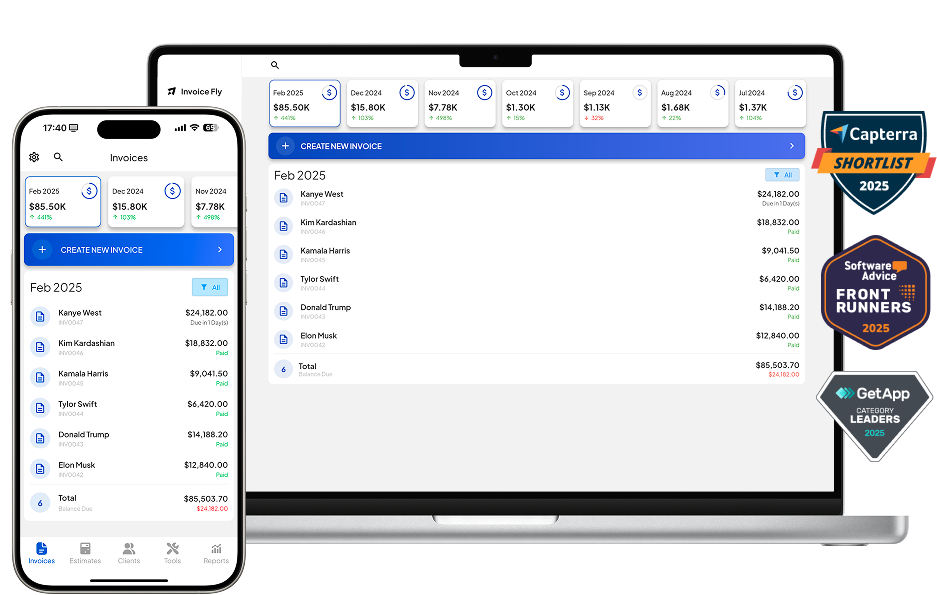- Home
- »
- Glossary Of Terms
- »
- Overhead Costs
What are Overhead Costs?
The No-Nonsense Guide for Contractors, Blue-Collar Pros & Service Businesses
You might know what you pay your workers. You probably track your materials. But if you’re not accounting for overhead, you’re leaving money on the table—or worse, pricing yourself out of business.
Let’s fix that.

Definition: What Are Overhead Costs?
Overhead costs (also called operating expenses or indirect costs) are all the business expenses that keep your company running—but aren’t tied directly to a specific job or project.
You still pay them whether you land a job or not.
The 3 Main Types of Overhead Costs
1. Fixed Overhead Costs
These stay the same month to month, no matter how many jobs you do.
✅ Examples:
- Rent or mortgage
- Insurance premiums
- Salaries of office staff
- Software subscriptions
2. Variable Overhead Costs
These change based on how much work you’re doing.
✅ Examples:
Fuel
Tool maintenance
Equipment rental
Credit card processing fees
3. Semi-Variable (Mixed) Costs
These have both fixed and variable elements.
✅ Examples:
- Phone plan with base + usage
- Commission-based admin wages
- Utility bills (base charge + usage)
Examples of Overhead Costs (By Category)
| Category | Examples |
|---|---|
| Office/Admin | Rent, utilities, office supplies, admin wages, phones, internet |
| Marketing | Website hosting, SEO, Google Ads, yard signs, vehicle wraps |
| Insurance | General liability, auto, tool, E&O, umbrella policies |
| Licensing | State contractor license, business registration, permits |
| Vehicle/Fleet | Gas, repairs, registration, depreciation |
| Software | Jobber, ServiceTitan, QuickBooks, CRM, time-tracking apps |
| Accounting | Bookkeeper, CPA, payroll service, tax prep |
| Tools/Equipment | Maintenance, replacement, depreciation of owned tools |
| Uniforms/PPE | Shirts, hats, gloves, safety gear, steel-toe boots |
| Training/Certs | OSHA, continuing education, trade certifications |
| Bad Debt | Unpaid invoices, refunds, or warranty rework |
| Depreciation | Gradual cost of aging equipment or vehicles over time |
Overhead Cost Example: Small Electrical Company
Let’s say you’re a 4-person electrical contractor. Here’s a monthly snapshot:
| Expense | Monthly Cost |
|---|---|
| Rent for shop/office | $1,200 |
| Admin assistant salary | $3,500 |
| Insurance (general + auto) | $850 |
| Fuel for vehicles | $800 |
| Software (Jobber + QuickBooks) | $275 |
| Phones | $180 |
| Marketing (Ads + site) | $600 |
| Accountant | $300 |
| Uniforms & PPE | $150 |
| Tools & maintenance | $300 |
| Total Monthly Overhead | $8,155 |
If you only do 20 jobs per month, each job needs to contribute at least $407.75 just to cover overhead.
Why Overhead Costs Matter (A Lot)
- Accurate Job Pricing: If you don’t build overhead into your pricing, you’re losing money—even if the job “looks profitable.”
- Profit Margins You Can Count On: You need to know your break-even point before you can grow or scale.
- Business Stability: Overhead continues during slow seasons, so you must plan for it year-round.
How to Calculate Overhead Per Hour
Let’s say:
Total overhead = $8,000/month
Let’s say:
Your 3 techs bill 30 hours/week each → 360 hours/month
$8,000 ÷ 360 hrs = $22.22/hour
📌 You must add $22.22/hour to every job just to break even on overhead. That’s before profit.
Quick Example: Overhead Markup in Job Estimate
Let’s say you’re quoting a drywall patch:
- Labor: $200 (4 hrs at $50/hr)
- Materials: $75
- Overhead: $22/hr × 4 hrs = $88
- Total Cost: $200 + $75 + $88 = $363
- Add 20% profit: $363 × 1.2 = $435.60
👉 If you don’t include the $88 in overhead, you’re underpricing the job and eating your own margin.
How to Reduce or Control Overhead Costs
- Use part-time or virtual admin help: Reduce salary costs without losing support.
- Switch to bundled software suites: Use software like Jobber or ServiceTitan instead of piecemeal apps.
- Use your trucks as moving billboards: Invest once in a wrap instead of ongoing ad spend.
- Cut underused subscriptions: Audit tools and apps quarterly.
- Track vehicle usage closely: GPS helps reduce fuel waste and side trips.
- Buy used or lease equipment: Lower your capital costs without compromising function.
Industry Benchmarks (Overhead as % of Revenue)
| Industry | Average Overhead % |
|---|---|
| HVAC | 30%–40% |
| Plumbing | 25%–35% |
| Landscaping | 20%–30% |
| Electrical | 25%–35% |
| General Contractors | 30%–45% |
| Cleaning Services | 15%–25% |
🧠 Rule of Thumb: Most blue-collar service businesses run with 20–40% overhead. If you’re lower, you may be missing something. If you’re higher, it’s time to optimize.
Final Thoughts: Overhead = Your Real Cost of Doing Business
Every hour your business is open, your overhead clock is ticking.
When you don’t build overhead into your pricing, you:
- ❌ Underquote jobs
- ❌ Miss profit targets
- ❌ Struggle to grow or pay yourself properly
But when you understand and track your overhead, you:
- ✅ Price with confidence
- ✅ Stay cash-flow positive
- ✅ Build a sustainable, scalable business
FAQs about Overhead Costs
Overhead costs are fixed operating expenses that aren't linked to a product or a service. These are typically regularly occurring expenses that the company needs to operate like internet costs, insurance, rent, employee salaries, utilities, accounting fees, legal fees, office supplies, etc.
An overhead percentage is the proportion of indirect costs incurred by a business relative to its total expenses, typically expressed as a percentage of direct costs. To calculate it, divide the total overhead costs of your business in a given period (for example, a month) by the sales made during this period.
Overhead costs typically fall into four primary categories: production overhead, administrative overhead, selling overhead and financial overhead. Each category represents a different aspect of a business's indirect costs and will likely include fixed, variable and semi-variable costs.
The cost of goods sold (COGS) formula is: Beginning Inventory + Purchases - Ending Inventory = COGS. This formula calculates the direct costs associated with producing or purchasing the goods a company sells during a specific period.
Here's a breakdown of the components:- Beginning Inventory: The value of inventory on hand at the start of the accounting period.
- Purchases: The cost of goods acquired or produced during the accounting period.
- Ending Inventory: The value of inventory remaining at the end of the accounting period.
EBIT stands for Earnings Before Interest and Taxes. It represents a company's profitability before accounting for interest expenses and income taxes. It is a measure of a company's operating profit, reflecting the earnings generated from its core business operations.

Other Free Resources

Try Invoice Fly Today
- Send quotes & invoices in seconds
- Collect card & online payments
- Receive instant notifications
- Win more jobs


